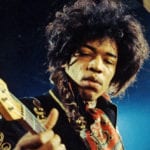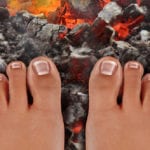 Weird Stuff
Weird Stuff  Weird Stuff
Weird Stuff  Our World
Our World 10 Ways Your Christmas Tree Is More Lit Than You Think
 Movies and TV
Movies and TV The 10 Coolest Stars to Set Sail on The Love Boat
 History
History 10 Things You Didn’t Know About the American National Anthem
 Technology
Technology Top 10 Everyday Tech Buzzwords That Hide a Darker Past
 Humans
Humans 10 Everyday Human Behaviors That Are Actually Survival Instincts
 Animals
Animals 10 Animals That Humiliated and Harmed Historical Leaders
 History
History 10 Most Influential Protests in Modern History
 Creepy
Creepy 10 More Representations of Death from Myth, Legend, and Folktale
 Technology
Technology 10 Scientific Breakthroughs of 2025 That’ll Change Everything
 Weird Stuff
Weird Stuff Ten Bizarre Facts About The Doge Meme
 Our World
Our World 10 Ways Your Christmas Tree Is More Lit Than You Think
 Movies and TV
Movies and TV The 10 Coolest Stars to Set Sail on The Love Boat
Who's Behind Listverse?

Jamie Frater
Head Editor
Jamie founded Listverse due to an insatiable desire to share fascinating, obscure, and bizarre facts. He has been a guest speaker on numerous national radio and television stations and is a five time published author.
More About Us History
History 10 Things You Didn’t Know About the American National Anthem
 Technology
Technology Top 10 Everyday Tech Buzzwords That Hide a Darker Past
 Humans
Humans 10 Everyday Human Behaviors That Are Actually Survival Instincts
 Animals
Animals 10 Animals That Humiliated and Harmed Historical Leaders
 History
History 10 Most Influential Protests in Modern History
 Creepy
Creepy 10 More Representations of Death from Myth, Legend, and Folktale
 Technology
Technology 10 Scientific Breakthroughs of 2025 That’ll Change Everything
10 Promising Celeb Endorsements That Went Spectacularly Wrong
Companies have often used celebrities to push their goods or services. Most of the time, this works out well. Actors, musicians, and athletes have a wide reach and come with a built-in fan base that shows genuine interest in the products they endorse.
Not all company-celebrity pairings are made in Heaven, though. Some of them were terrible ideas that should have never happened to begin with. Others went wrong when the celeb in question did something monumentally stupid, forcing the sponsor to drop the campaign in order to save face.
10 Gary Lineker Likes Serial Killer Selfies
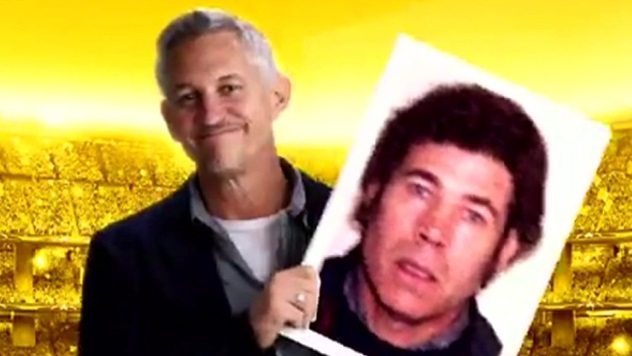
In 2017, British snack food manufacturer Walkers used retired footballer Gary Lineker to endorse a new campaign for Walkers Crisps. All participants had to do was take a selfie and share it on Twitter using the #WalkersWave hashtag, and they could win tickets for the UEFA Champions League final in Cardiff. Furthermore, the pictures were inserted into a video featuring Gary Lineker thanking you for participating and complimenting your selfie.
It didn’t take long for people to realize that the process was automated with no moderation whatsoever. In a world post–Boaty McBoatface, a marketing firm should have known better than that. Soon enough, Twitter was flooded with clips of Lineker holding up pictures of serial killers Harold Shipman and Fred West or child molester Jimmy Savile, saying “Nice selfie!”[1]
To make matters worse, Walkers set up giant screens in Cardiff to show the tweets in real time. They managed to get a handle on the situation a few hours later, but once something is on the Internet, it’s there forever.
9 Sex Crimes Sell Hatchbacks

In late 2012, India was dealing with massive outrage after a female student was gang raped and murdered. A few months later, the government passed a new law to enact harsher punishments for sex crimes. Bizarrely, that’s also when an advertising company thought it would be best to use sex crimes to sell Ford hatchbacks to the Indian market.
Even more bizarre, they thought that the best celebrity they could use was former Italian prime minister Silvio Berlusconi. Advertising agency JWT India released a cartoon image depicting Berlusconi behind the wheel of a Ford Figo, smiling and throwing up the victory sign while carrying three scantily clad women bound and gagged in the trunk.[2] It should also be noted that, at the time, Berlusconi was on trial for using an underage prostitute for his infamous bunga bunga parties.
The goal of the advertisement was to highlight the spaciousness of the Figo under the tagline, “Leave your worries behind with Figo’s extra large boot.” The campaign also included another cartoon of Paris Hilton carrying three Kardashians in the trunk.
8 Charles Barkley Calls New Endorsement A Scam
Back in December 2011, former NBA power forward and current basketball analyst Charles Barkley became the spokesman for Weight Watchers’s “Lose Like a Man” campaign. A few weeks later, he called it a scam on TV.
It was during an Atlanta Hawks–Miami Heat game where Barkley was serving as announcer alongside Reggie Miller and Kevin Harlan. They thought they had gone to commercial (which they had on television), but everything they said could still be seen and heard on the “Eye on Basketball” stream on the NBA website. The guys started chatting about Barkley’s new endorsement deal, to which the former NBA player commented that it was the greatest scam going, even better than getting paid to watch sports.[3]
To clarify, Barkley called it a scam in the sense that it was an easy gig which paid lots of money, not that Weight Watchers didn’t work. However, several news outlets took the quote out of context, which caused a fair amount of confusion and embarrassment. However, Weight Watchers seemed to take it in stride and concurred with Sir Charles that the job was, indeed, a “great gig.”
7 Oprah Promotes Surface Using iPad
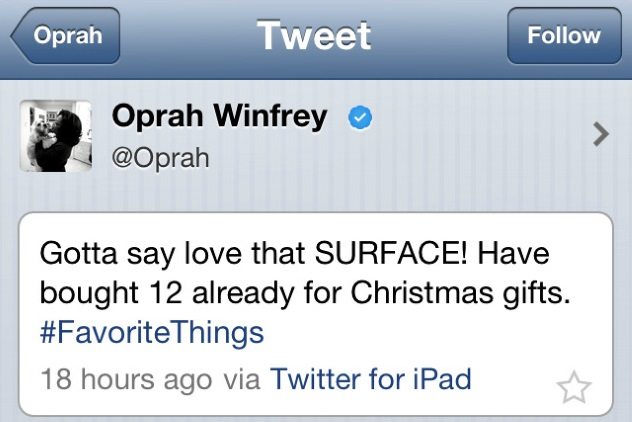
It shouldn’t be surprising that a lot of celebrities don’t actually use the products they endorse. Still, not using them is one thing. Trying to promote them while accidentally supporting their main rival is another.
In 2012, Microsoft brought out the Surface tablet, which was positioned as a direct competitor to the Apple iPad. They spent a fortune on marketing, which included endorsements from several high-profile celebrities. Chief among them was Oprah. It made sense. She had legions of dedicated fans and a long track record of large sales increases for the products she plugged.
Oprah sent out one tweet showing her love for the Microsoft Surface, which was seen by her millions of followers. She named it one of her “Favorite Things” and claimed to have bought a dozen for Christmas. There was nothing wrong with the tweet itself. However, people couldn’t help but notice that the Surface-endorsing message was sent from an iPad.[4]
Whoever wrote the tweet failed to realize that, by default, Twitter showed where messages were sent from on mobile. While many lampooned Oprah’s marketing gaffe, longtime fans should not have been surprised. She had no qualms about naming the iPad the best invention of the century two years earlier.
6 The Reverse Endorsement
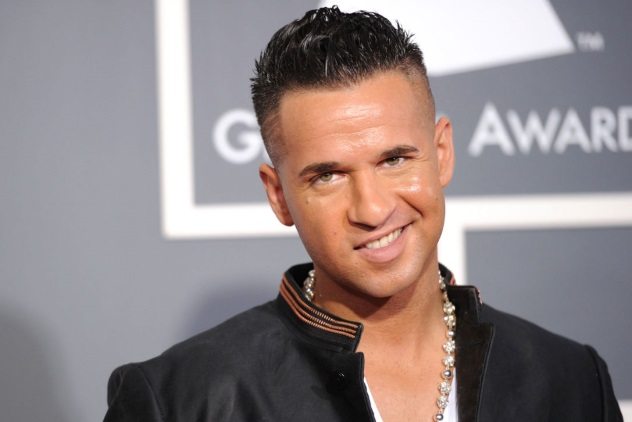
Back when the reality television dreck known as Jersey Shore still polluted American airwaves, one of the breakout stars was Michael Sorrentino, aka The Situation. Taking full advantage of his 15 minutes of fame, Sorrentino endorsed numerous products while simultaneously teaching people to live the Jersey Shore lifestyle under the motto “GTL” (gym, tan, laundry).
The show was a ratings hit for MTV, so, clearly, many people liked Sorrentino. Many, many more, however, found him incredibly obnoxious. In fact, American retailer Abercrombie & Fitch offered him money to stop wearing their clothes, which were part of his “look.”[5] The company was worried that their association with Sorrentino would hurt their image and offered him $10,000 to switch to another brand.
This didn’t work, so A&F changed tactics and launched a parody line called The Fitchuation, also promoting GTL. Maybe they were trying to annoy Sorrentino into dumping the brand, or it was simply a case of “if you can’t beat them, join them,” but the reality TV personality took them to court. He accused A&F of various charges, including false advertising for the $10,000 offer. Sorrentino argued that the money was a publicity stunt and implied his sponsorship. The judge ruled in the company’s favor on all counts and deemed the offer “undisputedly true.”
5 Iggy Pop Can’t Get Swiftcovered
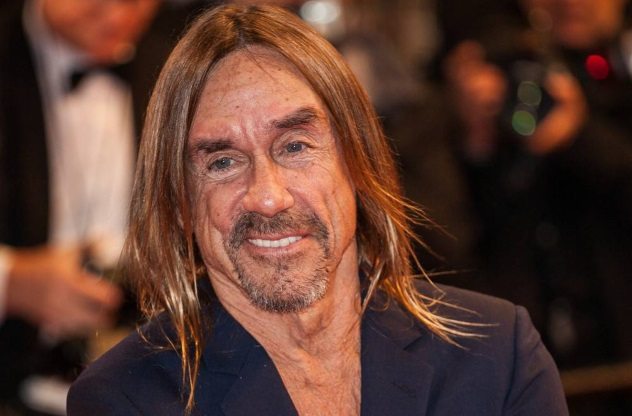
In 2009, the “Godfather of Punk,” Iggy Pop, starred in an advertisement for British car insurer Swiftcover. He used the lines, “I got it swiftcovered. I got insurance on my insurance!” That would certainly imply that Iggy was insured by the company, but people soon pointed out that that would be impossible, as Swiftcover didn’t provide coverage for musicians.
A spokesperson for the company pointed out that they chose Iggy Pop because he was living life to the fullest, not because he was a musician. Even so, the advert received enough complaints to warrant an investigation from the Advertising Standards Authority (ASA), the UK’s advertising regulator. They ruled the advertisement misleading, since Swiftcover doesn’t provide insurance services to anyone in the entertainment industry.[6] The insurer was forced to remove the advertisement from broadcast but continued to use Iggy, even though he never became eligible for their services.
4 Conference Bayhem
The 2014 Consumer Electronics Show (CES) seemed like the perfect platform for Samsung to unveil its new line of ultra HD curved television sets. They set up a large press conference in a Las Vegas hall filled with hundreds of industry experts, journalists, and executives.
Who better to tout the merits of giant, immersive screens with hyper-sharp images than director Michael Bay? With hits such as Bad Boys, Pearl Harbor, and Transformers, he built a huge career out of flashy action scenes. He was joined onstage by Samsung bigwig Joe Stinziano, but almost immediately, the presentation went sideways. Bay accidentally skipped a line, tried to repeat it, and then couldn’t keep up with the teleprompter. He got so flustered that he just stopped talking entirely. Stinziano tried to guide him in the right direction, but Bay just apologized and walked offstage.[7] Bay’s minor meltdown became the talking point of the presentation, which was otherwise described as underwhelming.
The Bay press conference curse continued two years later, when the director endorsed a self-driving electric concept car from Chinese conglomerate LeEco called LeSEE. Perhaps learning from the Samsung fiasco, the company allowed Bay to film his part beforehand. However, this meant sending the only LeSEE to London, where the director was shooting the new Transformers movie.
While there, the car was involved in an accident and sustained too much damage to repair in time for the conference in San Francisco. Instead of bringing out the LeSEE for its first American unveiling, attendees had to make do with pictures and Michael Bay’s video.
3 Lance Armstrong’s Secret Weapon
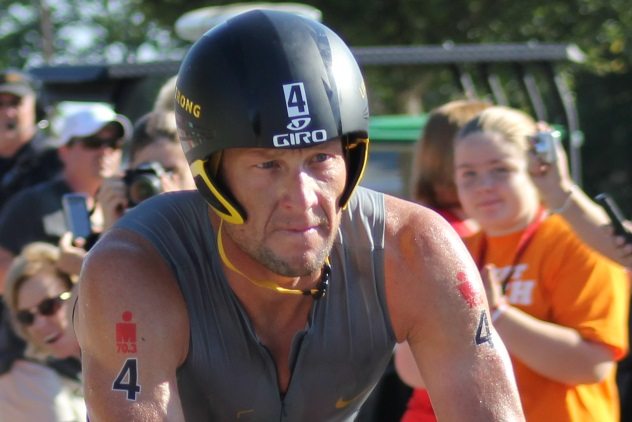
Nowadays, mentions of Lance Armstrong’s “secret weapon” would inevitably bring jokes and insults regarding his well-documented fall from grace due to years of doping. However, there was a time when energy drink company FRS used that tagline to great success.
The relationship between FRS and Armstrong went way beyond the typical celebrity endorsement. The cyclist invested in the company and, eventually, joined its board of directors. His confidence in the product only helped to boost public interest and helped FRS grow five-fold. Even so, like all other sponsors, FRS abandoned Armstrong once the doping allegations started gaining steam, and the cyclist left the company’s board of directors.
This wasn’t enough, though, as both Armstrong and FRS found themselves the targets of a fraud lawsuit. The plaintiffs were a group of FRS consumers accusing them of false advertising for touting the energy drink as Armstrong’s “secret weapon” when, as it became abundantly clear, performance-enhancing drugs were what the cyclist relied on. However, a federal judge ruled the advertisement as “puffery,” which is common in the advertising world and non-actionable.[8]
2 Who Was Better: Dan Or Dave?
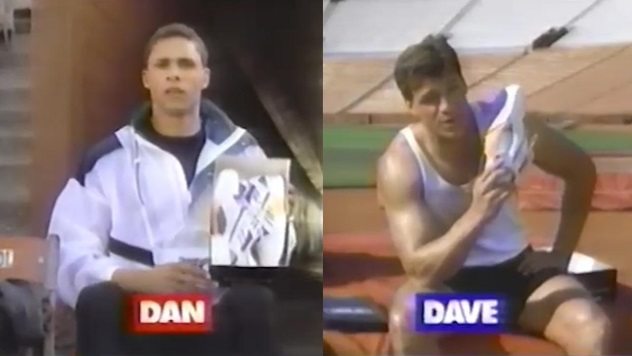
During the run-up to the 1992 Summer Olympics in Barcelona, Reebok organized one of the biggest advertising campaigns in sports history in an attempt to regain market share from its dominating competitor, Nike.
The campaign centered on a rivalry between two decathletes, Dan O’Brien and Dave Johnson. Right off the bat, it seemed risky because both were relatively unknown in the United States. However, when the campaign started, the Olympics were still months away, so Reebok had plenty of time to garner public support for the two track and field athletes.
The first Dan & Dave ad ran during the Super Bowl. It was something unique and interesting, and it became a hit. More commercials followed, showing the two athletes training and showing them as babies. People became invested, and they picked a side, eagerly anticipating when it would all be settled at the Olympics.
Of course, in order for this to happen, both athletes had to qualify first. But this seemed trivial, especially for O’Brien, who had just won the World Championship in Athletics the year prior. And yet, the unthinkable happened: Dan failed the pole vault at the Olympic trials, and Reebok saw its $30 million campaign go up in flames weeks before the big payoff.[9]
Now it was just Dave, who, although favored to win, suffered a stress fracture and took bronze. Dan eventually won gold at the 1996 Olympics but had switched to Nike by then.
1 Oscar Pistorius Was Nike’s Bullet In The Chamber
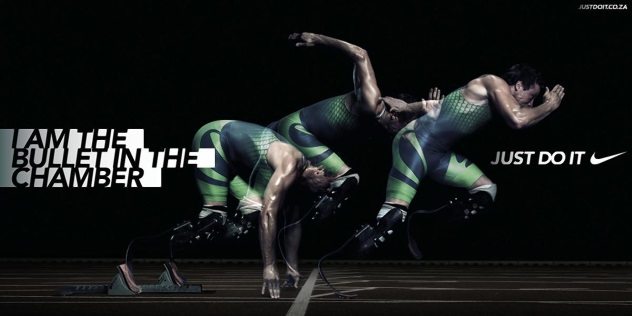
Back in 2012, South African amputee sprinter Oscar Pistorius was one of the most beloved athletes in the world. After winning gold medals at the past three Summer Paralympics, he became the first double-leg amputee to take part in the 2012 Olympics in London.
Fast-forward to early 2013, and the man known as the Blade Runner was now on trial for the murder of his girlfriend, Reeva Steenkamp. Pistorius claimed that he shot his girlfriend thinking she was an intruder hiding in the bathroom.
Whenever athletes are in the news for something bad, sponsors have to consider the pros and cons of their working relationships and decide if and when to sever their business ties to avoid damaging their company’s image. In this particular case, Nike found itself in a precarious position, as it had not one but two gun-themed ads featuring Oscar Pistorius.[10]
One of them was a few years old and showed a montage of athletes comparing their bodies to a weapon. Pistorius is seen running using effects that liken his motion to that of a traveling bullet. Based on this concept, a new ad from 2011 was more straightforward. It showed Oscar Pistorius sprinting off the starting line with the tagline, “I am the bullet in the chamber.” As if that wasn’t enough, the advertisement also featured Nike’s famous “Just Do It” slogan.
Read more about advertising and PR gone wrong on Top 10 Worst Marketing Gaffes Ever and Top 10 Harebrained Celebrity PR Stunts That Backfired Spectacularly.

